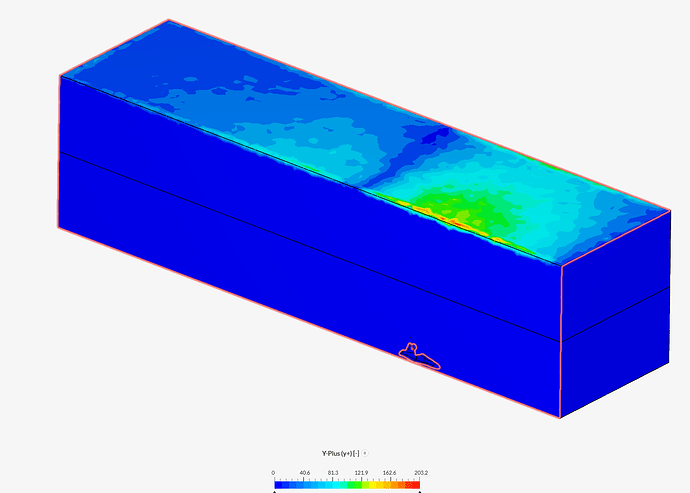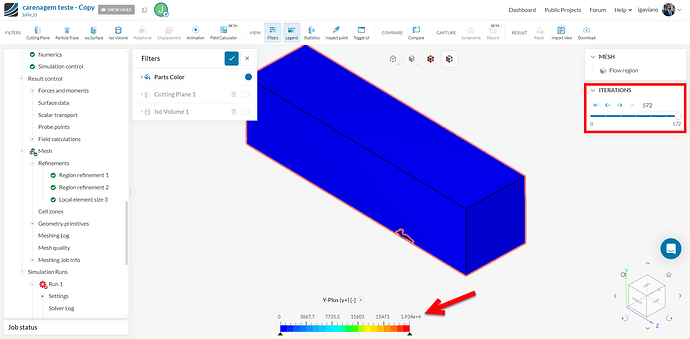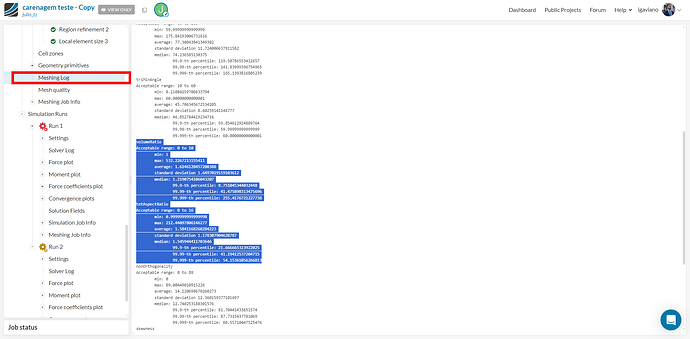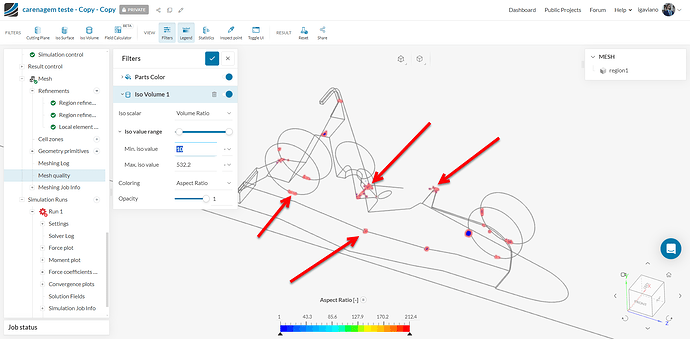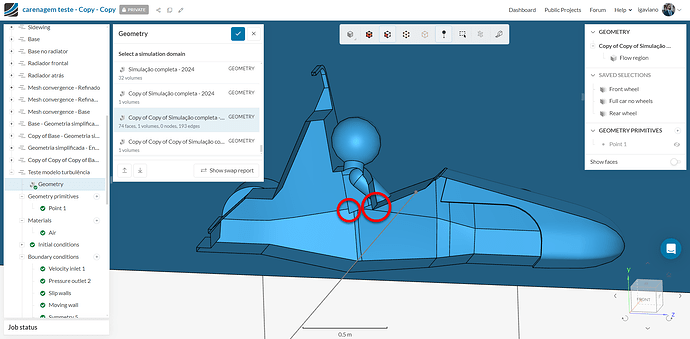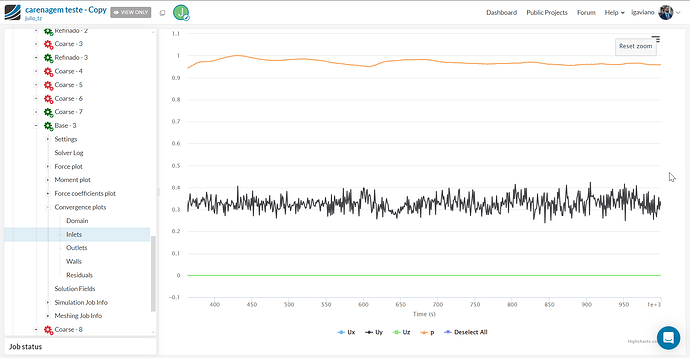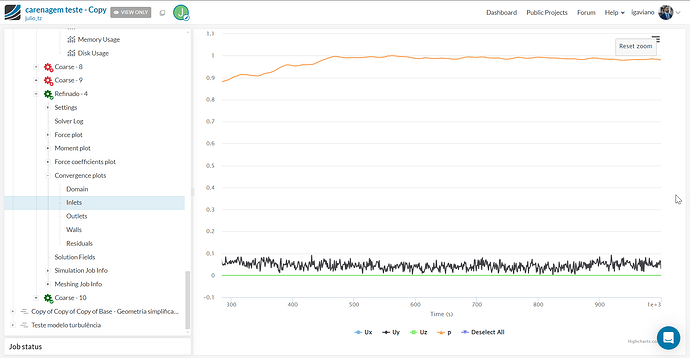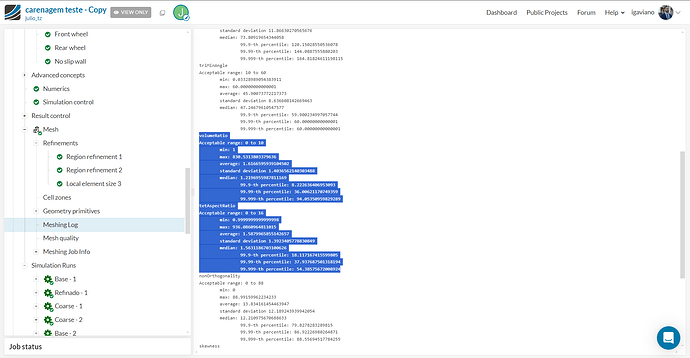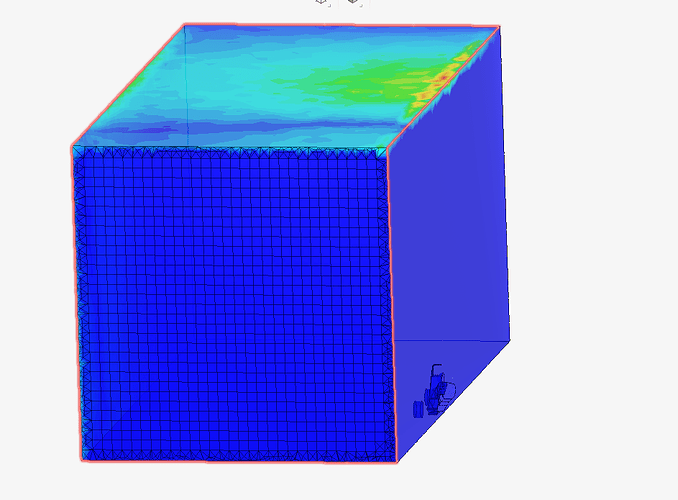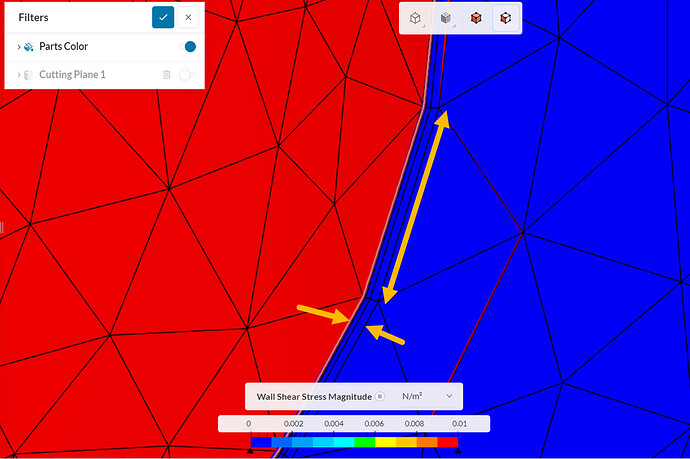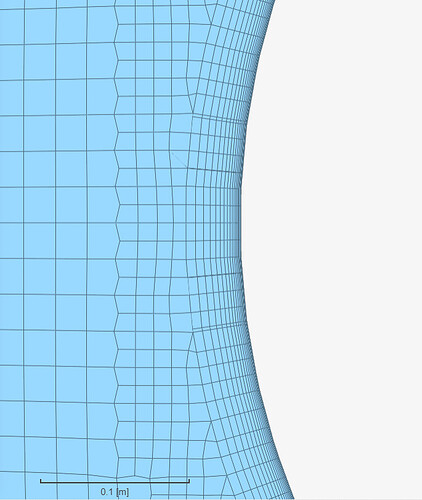Hi.
I’m currently doing a CFD analysis of a Formula SAE car, and after following the tutorial (Tutorial: Incompressible Flow around a Formula Student Car) of the same topic, I’ve found some weird results regarding de y+ values on the external walls of the enclosure (the slip walls). When comparing to the tutorial results, the y+ values on that region are <1, but in my simulation there are some hotspots where they reach over 200. I don’t exactly know why that is happening since I’ve used the same boundary conditions as the tutorial provided.
Here’s the link to my project:
The relevant problem is happening on the Geometria simplificada - Enclosure correto simulations.
Hi @jtramontina, thanks for posting at our forum 

I see that your simulation diverged, that probably caused ever-increasing values for the velocity field which affected the y+. If you go to the last step in your simulation, for example, you’ll see much higher values for it:
To solve that issue, you can apply the workflow provided by this tutorial. That problem seems to be caused by the low quality of the generated mesh, which in turn happened because of some unwanted features of the CAD model. In order to inspect your mesh quality, take a look at this tutorial.
If you look at your mesh in particular, you’ll see that many parameters fall outside the desirable range:
Your problem probably lies in some unwanted features in the CAD model:
For example, these sharp edges:
Tell me if that helps in any way
Best,
Igor
Greetings from Brazil.
The simulation I referred on my original post has converged:
Could you check these 3 runs? They are the ones with a good enough mesh, converged results and the weird y+ behavior:
Hi @jtramontina, thanks for the clarification!
However, taking a look at the velocity graphs for the inlet, for example (“Base - 3” Run), I see that, even if the simulation was completed, the results don’t show signs of convergence for the y direction:
The results look similar when I look at the “Refinado - 4” Run:
I took a look at the mesh for that run as well and the parameters also seem to fall outside the desirable range.
Did you use this mesh to run the simulation?
At any rate, I’ll ask my colleagues to provide some input as well to see if I’m missing something 
Best,
Igor
2 Likes
I’ve done 3 separate meshes: coarse (mesh 74), medium (72) and fine (73) and used those for their respective runs.
I’ll have a look at changing the geometry and looking at the mesh again based on your previous reply, so that their values fall inside the acceptable range.
Thanks for the help so far!
1 Like
Hi again @jtramontina, as I promised, I’ve asked my colleagues for input
As to the convergence issue I mentioned - maybe it looks fine for these sorts of cases. However the mesh indeed needs to be worked on, as we see it’s very distorted near the walls:
Something that might help would be for you to apply an inflate boundary layer mesh refinement to those regions, since the automatic mesher won’t do that for moving/slip walls. Please check out the following article as well:
Does that help?
Best,
Igor
Hello!
It’s difficult to say for sure without running tests, but here are some comments:
- Since the “wall function” implementation in SimScale is independent of y+ (it blends between full resolution and wall function depending on the local y+), it is technically better to use ‘wall function’ instead of 'full resolution
- There’s currently a massive jump in cell size between the boundary layer and the surface mesh.
You’d like to have the transition be at least less extreme. E.g. the transition below is very good.
- When it comes to y+ values on the top face: from a practical perspective, this doesn’t really matter too much. y+ calculations are shown on all walls, but they only really matter for rotating/moving/no-slip walls (i.e. you won’t even see a ‘turbulence’ definition if you select slip wall). To me it looks a bit weird that y+ values are even shown on a slip wall. For example, if you look at the symmetry plane boundary, you won’t see any values for y+
2 Likes

